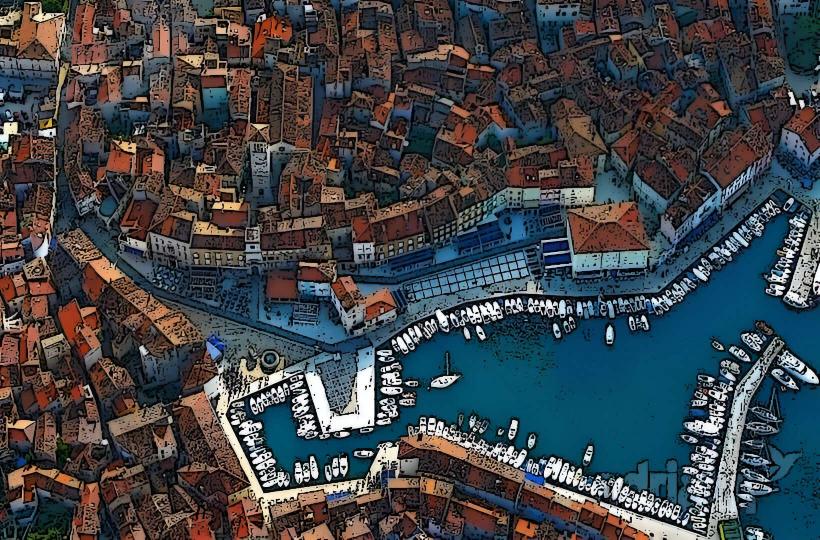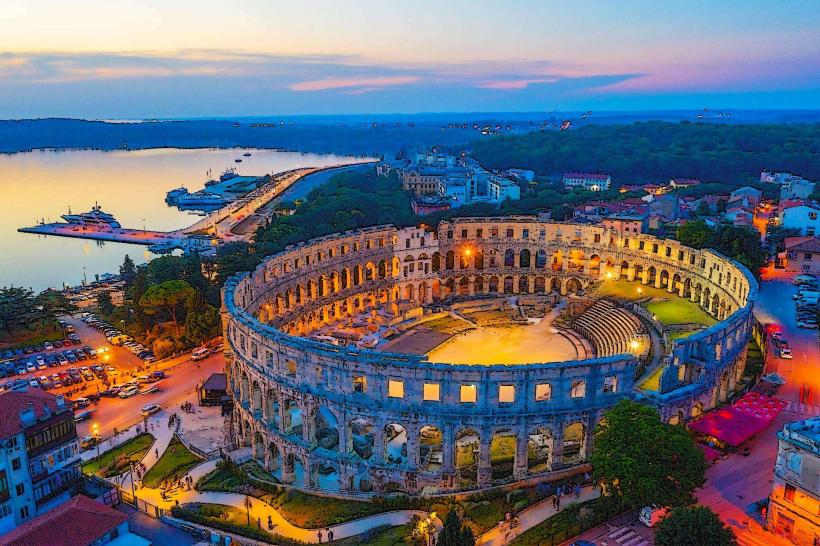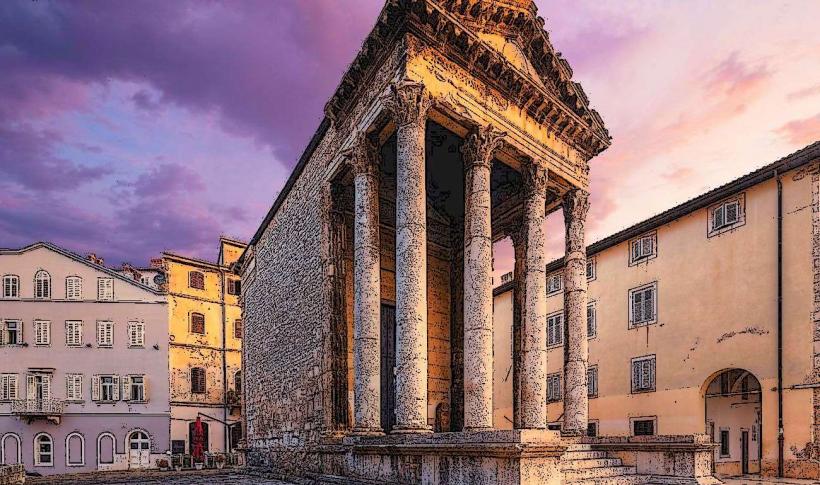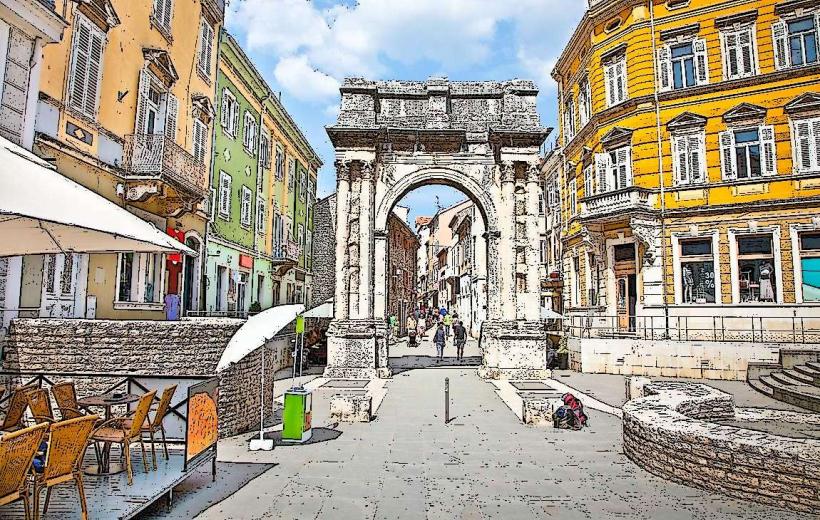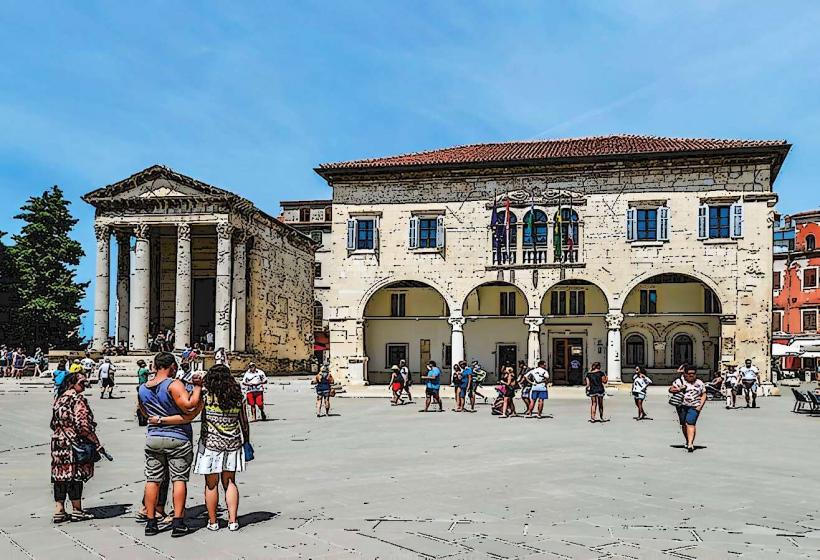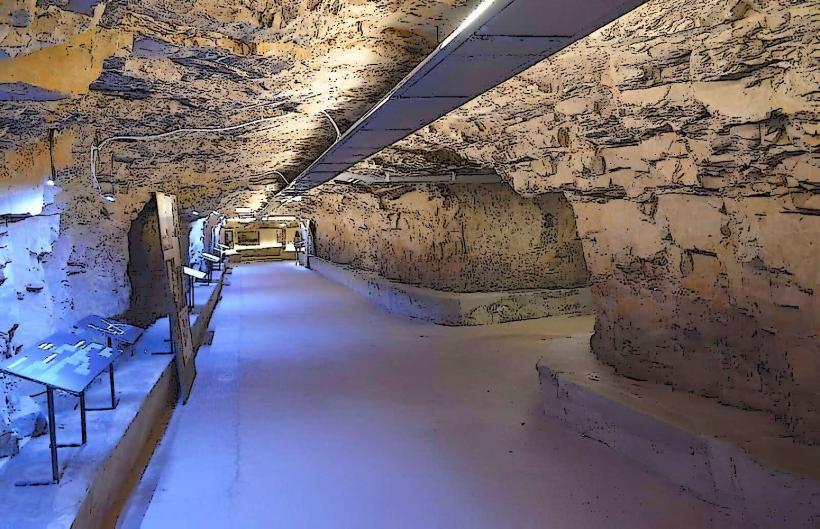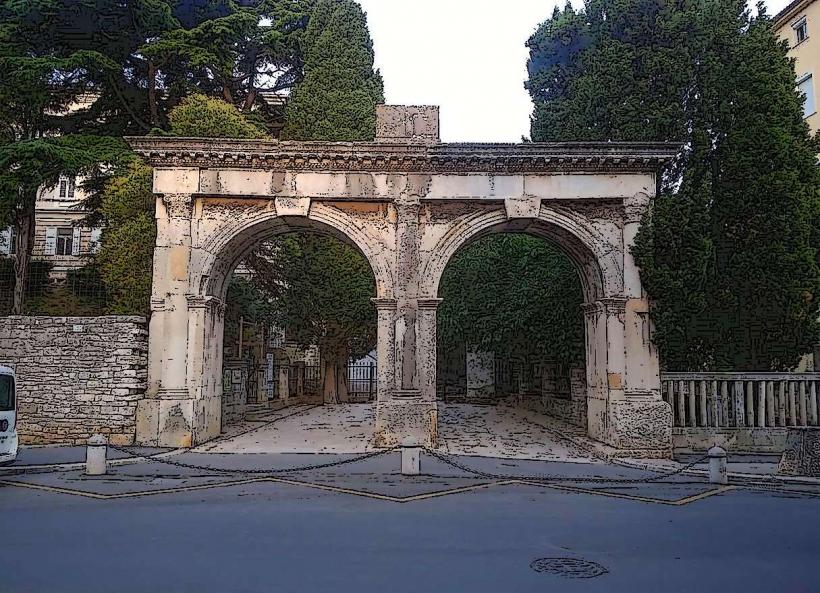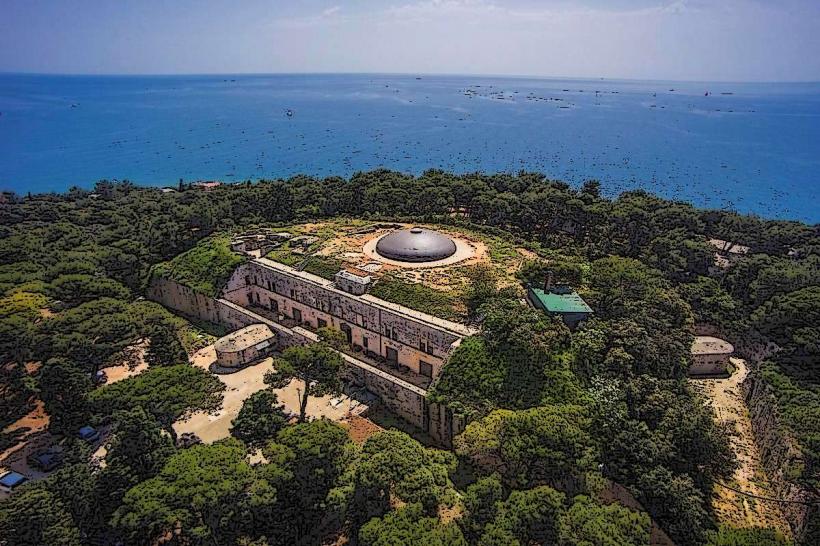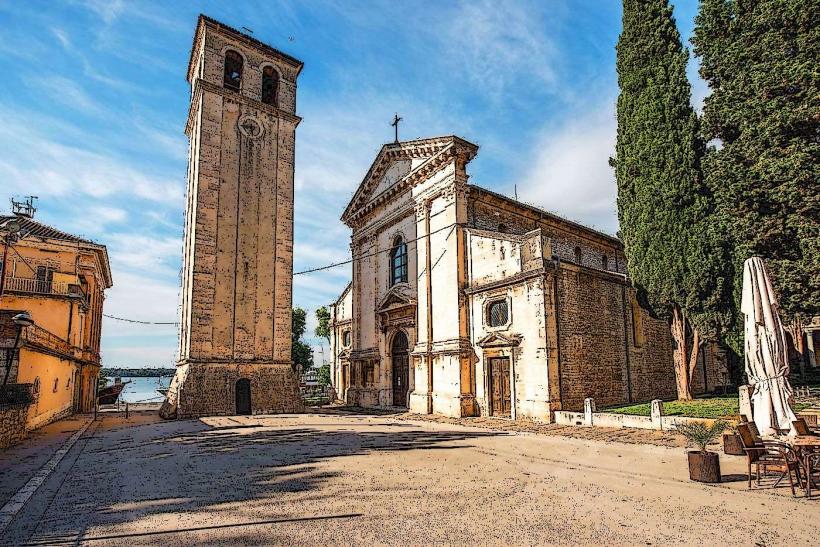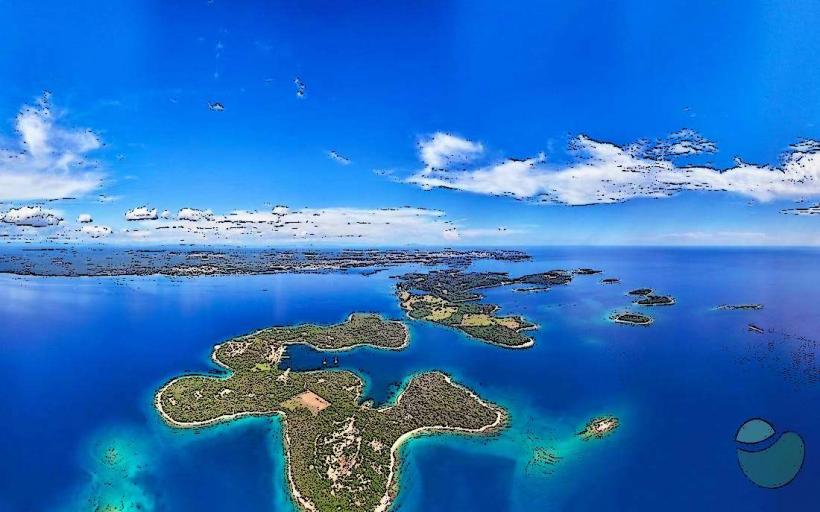Information
Landmark: Gate of HerculesCity: Pula
Country: Croatia
Continent: Europe
Gate of Hercules – Pula, Croatia
The Gate of Hercules is one of the most significant and well-preserved monuments in Pula, Croatia, offering insight into the city’s Roman past. This ancient Roman gate once served as an entry point into the city, marking the boundaries of Roman Pula (Pola). The gate is an excellent example of Roman military architecture and one of the oldest standing monuments in the city.
Historical Background
- Date of Construction: The Gate of Hercules was built in the 1st century BCE, around the time of the Roman Emperor Augustus. It is named after the Roman god Hercules, who was often associated with strength and protection. The gate was likely dedicated to this deity as a symbol of the strength and defense of the city.
- Roman Entrance: Originally, the gate would have been part of the city’s fortifications, acting as one of the major entrances into Pula, which was a prominent Roman port and military hub. The gate is situated near the Pula City Walls, which once encircled the Roman settlement and provided protection from external threats.
- Function: The gate’s primary purpose was as a military and civic entrance, offering access to the city’s core while serving as a defensive structure. Over time, it has become a historical landmark, symbolizing the Roman influence in the region.
Architectural Features
Design and Structure
- The Gate of Hercules is a single-arched structure, built from large blocks of limestone. It features a distinctive Roman style, with Corinthian columns flanking the arch, giving it a sense of grandeur and significance.
- The gate stands at a height of 7 meters (23 feet) and is wide enough to allow for the passage of both pedestrians and small vehicles in ancient times.
Inscriptions and Dedications
- The gate is adorned with an inscription that identifies it as a structure dedicated to Hercules, as well as celebrating the patronage of the ruling family during its construction.
- The dedication inscription reads: "To the god Hercules, by the decree of the city, for the safety of the citizens and their army."
Decorative Elements
- The Corinthian columns on either side of the gate are intricately designed and help elevate the architectural appeal of the structure. The reliefs and decoration on the stonework show typical Roman motifs, such as military symbols and religious iconography related to Hercules.
Reliefs and Sculptures
- The gate is decorated with sculptural elements, including carved reliefs of Hercules. These carvings emphasize the deity’s association with strength, power, and protection. The reliefs on the columns and the archway showcase the symbolic significance of Hercules, believed to have protected the city from invaders and dangers.
Cultural and Historical Significance
Roman Military Architecture
- The Gate of Hercules is a key example of Roman military architecture. It not only served a functional purpose as part of the city walls but also acted as a symbol of the Roman Empire’s power and military prowess. The choice of Hercules as the gate’s patron reflects the city’s reliance on military strength for its defense and prosperity.
Symbol of Roman Influence
- The gate stands as a physical reminder of the Roman Empire’s dominance in the region. Its association with Hercules reflects the Roman practice of honoring their gods and linking their imperial power to divine protection.
- Pula, being a major port and strategic location during the Roman period, would have benefited from such monumental structures that served both as practical defenses and public displays of Roman authority.
Civic Identity
- The gate also served to reinforce the civic identity of Roman Pula. As an entrance into the city, it was one of the first monuments encountered by travelers and visitors, symbolizing the city’s strength, prosperity, and cultural significance in the ancient world.
Visitor Experience
- Public Access
- The Gate of Hercules is located in the old town of Pula, making it easily accessible to tourists and visitors. It stands as a part of the Pula City Walls, which is a fascinating area for exploration due to the well-preserved ancient defenses.
- Photography and Exploration
- The gate is a popular spot for photography due to its striking architecture and historical significance. It stands out as one of the most iconic landmarks in Pula, and visitors can take a closer look at its reliefs, inscriptions, and columns.
- Educational Experience
- Visitors can learn about the Roman military history of Pula and its role as a strategic city within the empire. Information panels and guided tours often provide deeper insights into the history of the gate and its importance within the city’s larger fortification system.
Interesting Facts
One of the Oldest Roman Monuments
- The Gate of Hercules is one of the oldest Roman monuments in Pula, dating back to the 1st century BCE. It provides a tangible connection to the city’s past as an important Roman military and civic center.
Surviving Roman Monument
- Despite centuries of change and the passage of time, the gate has remained intact through the ages. It continues to stand proudly as a symbol of Roman architectural ingenuity and Pula’s rich history.
Hercules as a Protector
- In Roman mythology, Hercules was seen as a protector of cities, which is why the gate was dedicated to him. The belief in divine protection was common in ancient Rome, and many cities had structures dedicated to gods who were believed to safeguard them from external threats.
Nearby Attractions
- Pula Arena: A short distance away, the Pula Arena, a massive Roman amphitheater, is one of the best-preserved structures of its kind in the world and a must-visit site in the city.
- Roman Forum: Nearby, the Roman Forum in Pula is another archaeological site filled with ancient ruins, temples, and monuments, including the Temple of Augustus and the Arch of the Sergii.
- Temple of Augustus: Located close to the Gate of Hercules, the Temple of Augustus is a well-preserved Roman temple dedicated to the first Roman emperor and is a striking example of Roman religious architecture.
Conclusion
The Gate of Hercules is a standout monument in Pula, offering visitors a glimpse into the city’s rich Roman history. This ancient triumphal gate represents not just military strength but also the cultural and religious practices of the Romans. With its impressive design, inscriptions, and reliefs, the gate is a symbol of Pula’s strategic importance in the Roman Empire. Whether you're a history lover or a casual traveler, the Gate of Hercules is a must-see attraction that showcases the lasting legacy of ancient Rome in this coastal Croatian city.

